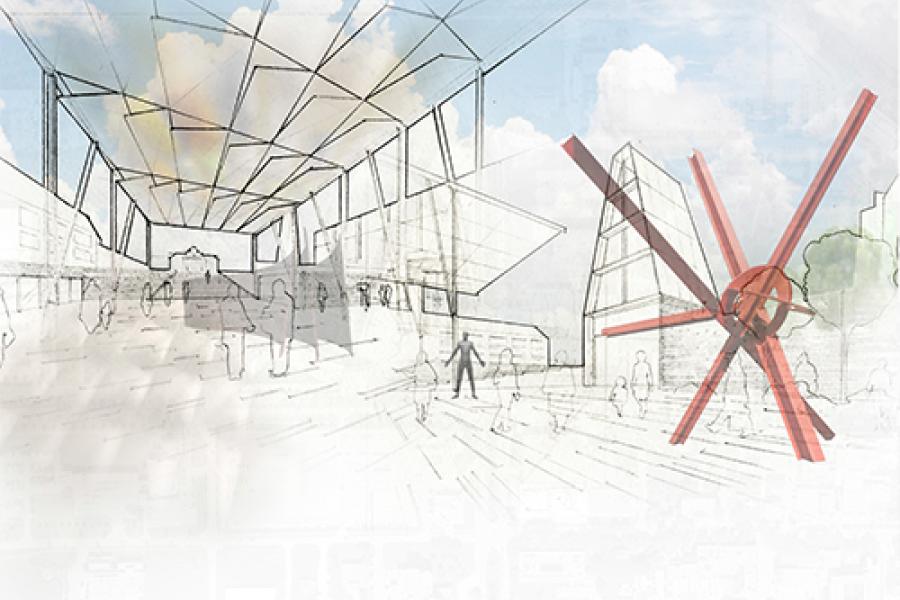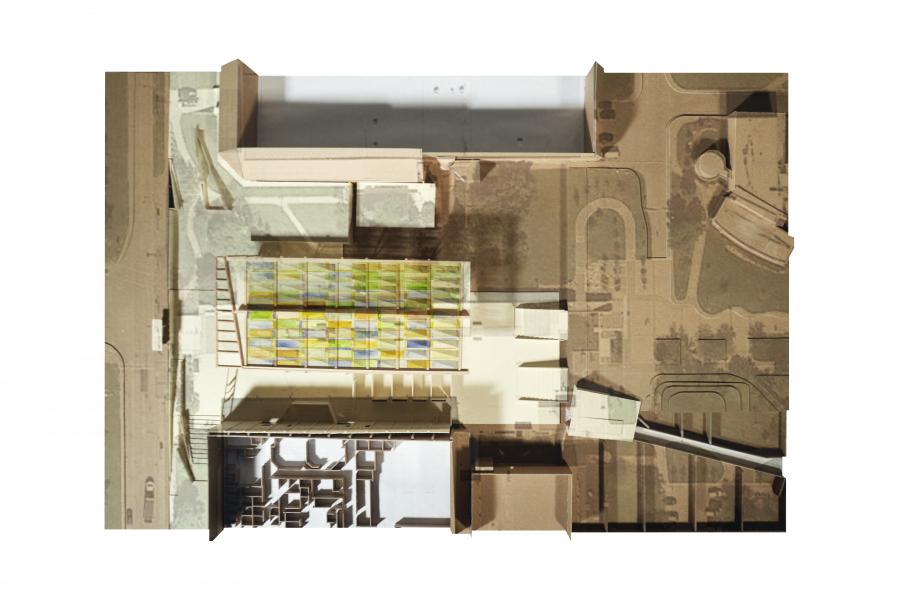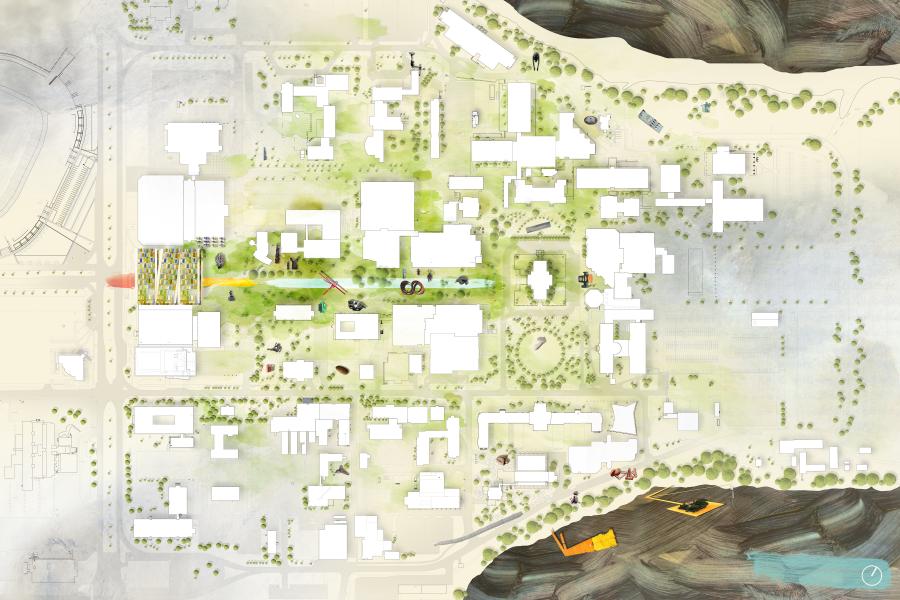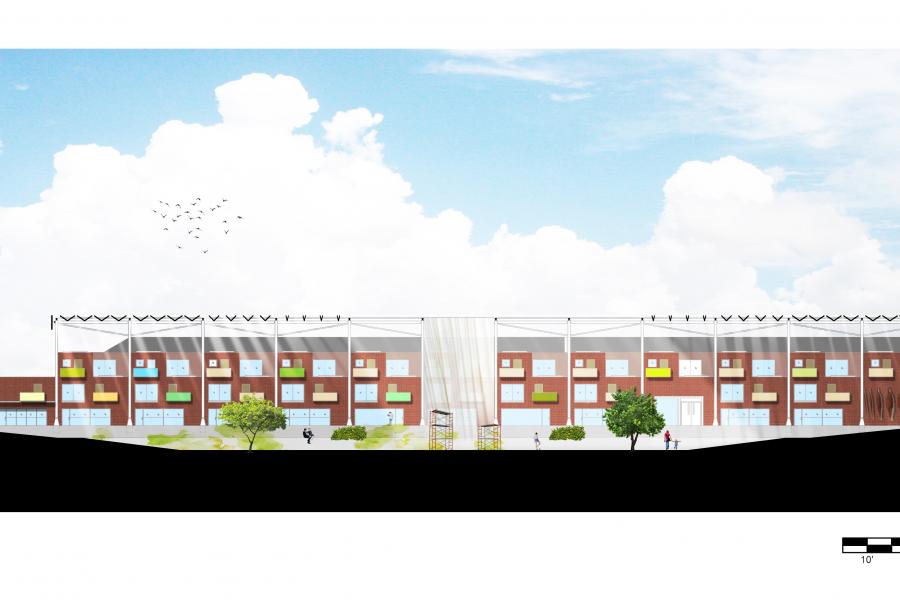Mitchell McIntosh
Advisor: Lisa Landrum




Campus as Gallery: Intertwining Art and Life
As places of diverse heuristic exploration, university campuses play a significant role in enhancing public exposure to various forms of human creativity. Yet design attention is often directed toward the formal environment of classrooms and specialized research facilities, limiting the degree to which the public and university community can engage with processes of discovery. In the realm of visual art, public galleries enable informal and more accessible means for individuals to engage new ideas and creative methods. Yet, they rarely provide adequate production and support space for ambitious works to be manifested. Furthermore, the effectiveness of the traditional gallery typology in cultivating interactions between the public and art is limited by being detached from public environments. This limitation has been partially addressed by the more casual settings of sculpture parks and artist-run residency spaces. As a complement to the classroom, how might the notion of a campus art gallery be re-imagined to augment possibilities for creation, collaboration, and material play, while also contributing to the public life of the campus in active and participatory ways?
Architecture has the potential to meaningfully connect people with each other, with their physical environment, and with the activities that take place within those settings. As the University of Manitoba urbanizes its suburban campus, there is an urgent need for new modes of public engagement to be cultivated and sustained. This thesis project will seek to respond to this imperative by treating the campus as an urban gallery: devising a gallery architecture that is intertwined with the existing campus infrastructure. This is accomplished by redesigning the western pedestrian threshold to the main campus, presently occupied by the University of Manitoba Extended Education Complex. This location straddles the boundary between the core public spaces of the Fort Garry Campus, and the urban environments beyond, establishing it as a major gateway into the campus. Defined by this prominent public position, the new gateway gallery will redefine the site as a transformative threshold: a crossing through which many paths overlap, and as a zone of interaction between artists, academics, and publics.
At the core of this thesis are a series of questions: how does architecture cultivate connections between people and art? What are the mutually edifying links between artistic production, academic research, and community life? How can architecture enrich public life through interconnecting activities of artists, academics, and citizens?
